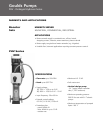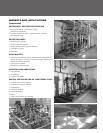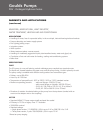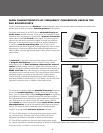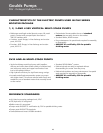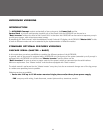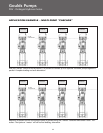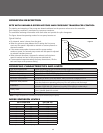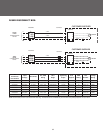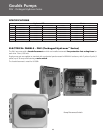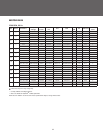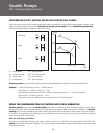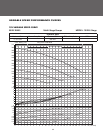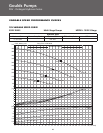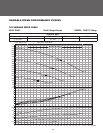
14
Goulds Pumps
PHV - Packaged Hydrovar Series
SELECTING A SET
The first thing to do when selecting a package is to determine the quantity of water required and the pressure it must
supply.
CALCULATING THE FLOW RATE
• The quantity of water called water requirement depends on the type of users, e.g. homes, offices, schools, as well
as their number. The theoretic requirement is the total amount of water required by all the users. In actual fact, since it
is very unlikely that there should be a simultaneous demand by all the users, the real requirement is lower than the
theoretic one.
CALCULATING THE HEAD
• The pressure required depends on the type of user. A number of factors must be taken into account, including the
height of the building, the suction conditions and the flow resistance in the pipes.
SELECTING A BOOSTER SET
• According to the required flow rate and head values, it is possible to identify the most suitable type of electric pump.
On two-pump sets the pumps normally act as back-up for one another. A single pump is normally sufficient to
provide for average requirements, while in conditions of high demand the back up pump may be called in to assist.
With the cyclic changeover function duty assignment is rotated to ensure both pumps remain active and with
even running hours, so wear is uniform and the use factor is reduced for longer pump life. This system also ensures
continuity of operation in case one of the pumps needs maintenance.The Hydrovar provides automatic lead/lag,
alternation when programmed in multi-control and wired via RS485 communication terminals.
TANK
• Frequent demand or small system losses determine pressure variations that may be compensated for by using a
tank. Correct selection of a diaphragm tank reduces the number of pump starts and, if it is installed near the
booster set, helps reduce the effect of water hammer, or fast acting flush valves.
The booster sets are ready for installation of diaphragm tanks directly on the delivery manifold, and additional tanks
can be connected to the unused end of the manifold.
For peak performance, variable speed booster sets need smaller tanks compared to traditional systems.
Generally speaking, a tank with a capacity of just 20% of the nominal capacity of a single pump, expressed in gallons
per minute, is required. Example: If my pump is sized for 100 GPM, then we would size a 20 gallon (total capacity)
diaphragm tank.
• Pre-charge the tank with air, 10-15 PSI below your system pressure. Charge dry tank without water pressure or before
installing in system.



